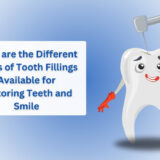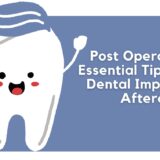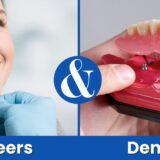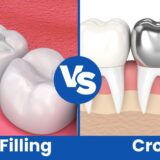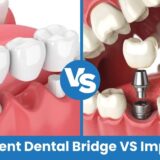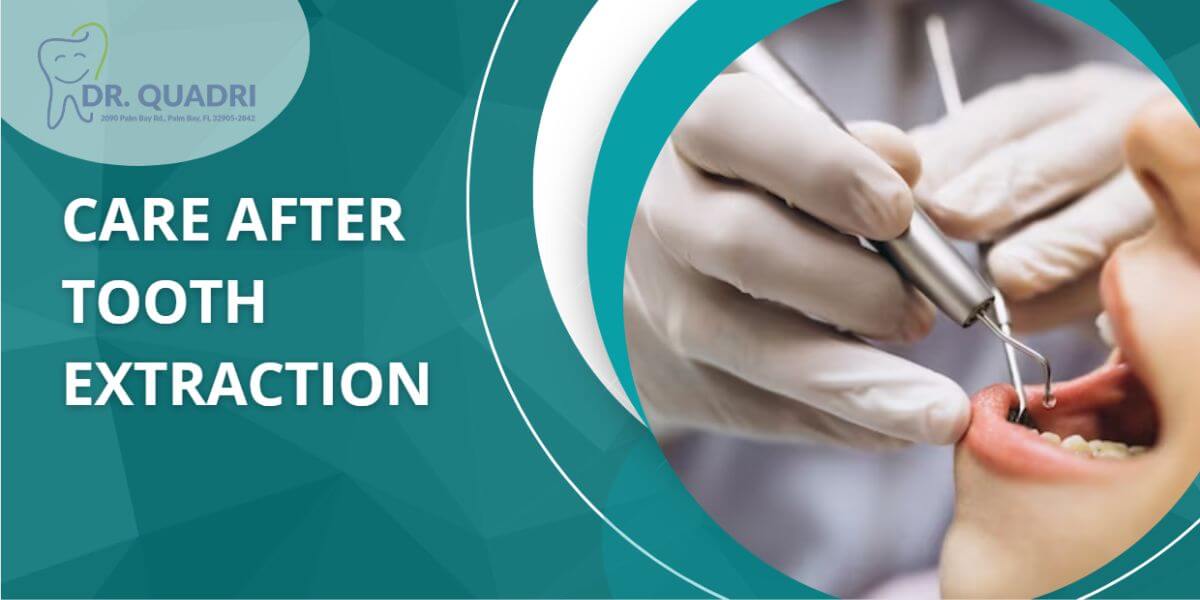Introduction
Although permanent teeth will stay with us for the entirety of our lifetime, there could be many factors that could lead to tooth extraction.
The reasons for extracting a tooth can vary from anything like a painful wisdom tooth to a tooth badly damaged by decay. Sometimes, tooth removal might be needed to make space for dental prosthetics or braces.
A rather common reason for removal can be a tooth that is badly injured or decayed. Some other possible reasons could also be:
- Crowded mouth
- Tooth infection
- Tooth decay
Tooth extraction can eliminate bacterial growth and improve your overall oral health.
The procedure of tooth extraction
The dentist will first assess the affected tooth and the gums surrounding it. A dental X-rays will be taken to check the bone levels and determine the extent of the damage. Be sure to inform your dentist about any medications or supplements you’re taking and mention all your medical conditions, as this information might be crucial.
Once all information has been gathered, treatment and sedation options might be discussed if the dentist feels it necessary. Antibiotics might be prescribed in the days leading up to the procedure.
Your tooth extraction can be either primary or surgical, depending on the cause of it.
Firstly, local anesthesia is given to numb the gum tissue surrounding the affected tooth. If the infected tooth is beneath the gum tissue, it might be required to cut away the gum or remove the obstructing area of the bone completely.
A person can expect to feel pressure against the tooth despite the anesthesia. They might also hear grinding and cracking noises; the experience could be unpleasant and distressing if the correct amount of anesthesia is not given. After the removal, the tooth socket is cleaned and disinfected. Sometimes, dentists place a dental bone graft(it helps prevent bone loss in your jaw).
Finally, the region could be stitched to help promote healing. When the procedure is complete, the dentist places a piece of gauze over the socket, and you will be asked to close it down firmly, with steady pressure. This helps slow bleeding hence promoting the blood to clot. (it is an essential part of recovery. It promotes healing and reduces the risks associated with dry tooth sockets.) The gauze will be taken out once the bleeding has reduced substantially. People usually have slight bleeding for the first 24 hours.
Risks and benefits associated with extracting a damaged tooth
Risks
Just like in any other surgical procedure, tooth extraction carries a small chance of medical complications. However, if your dentist recommends the tooth be extracted, the benefits likely outweigh the chances of post-extraction complications. Usually, after this procedure, a blood clot naturally forms in the hollow socket. Mentioned below are some potential risks:
- Post-surgical infection.
- Dry socket (if the blood clot does not form or dislodges, there would be a chance of the bone inside the socket to be exposed — a “dry socket.” In such cases, the dentist will protect the region by putting a sedative dressing over it for a couple of days).
- Nerve injury.
- Perforation of maxillary sinus.
- Delayed healing.
Some rather common after-effects of tooth extraction can be:
- Bleeding for 12+ hours
- Severe fever and chills( resulting from an oral infection)
- Nausea
- Cough and cold
- Chest pain and increase in blood pressure
- Swelling and redness around the extraction region
Benefit
Tooth extraction has its benefits for sure. Leaving a decayed or damaged tooth untreated can cause serious oral diseases, causing a domino effect of accumulated damage.
Hence, removing your affected tooth is the best chance of assurance for optimal oral health.
Additionally, it helps in easing dental pain — especially in case your tooth is badly broken or infected.
Post-extraction effects and symptoms
Some of the normal side effects following a tooth extraction procedure might include bleeding, swelling, and discomfort in the gums. Your dentist will provide instructions on how to manage your healing successfully.
The recovery period after tooth extraction
This depends majorly on the complexity of your case. However, most people tend to return back to their normal routine in just a few days. While you can return to routine activities within 12 to (at the max)72 hours, it usually takes several weeks to heal the jawbone.
However, if you’re planning on replacing the tooth with a dental implant, you’ll need to wait a few months to allow for a full recovery.
Post-extraction care
Following a tooth extraction, you will be sent home to recover. The recovery period typically lasts a few days. During this time, following some of these suggestions can help minimize oral discomfort, reduce the risk of infection, and favour speedy recovery.
- Taking painkillers prescribed by the dentist.
- Biting gently but firmly on the gauze pad placed by your dentist reduces bleeding and allows clot formation in the tooth socket. Changing gauze pads before they become soaked with blood is very important.
- Applying an ice bag to the area of an extracted tooth immediately after the extraction reduces swelling. Apply ice for 10 minutes at a stretch, then rest for 2-3 minutes before repeating the procedure.
- Relax and try to take rest for at least 24 hours after the tooth extraction. Limit activity as much as possible for a day or two.
- Avoid rinsing and spitting forcefully for the next 24 hours to avoid dislodging the clot formation in the socket.
- A day later, rinse your mouth with a solution made of half a teaspoon of salt and 8 ounces of warm water; it acts as a disinfectant.
Recommended diet after tooth extraction
Very often people ask the question, “How long after a tooth extraction can I eat?”
It is recommended that you avoid consuming anything that involves chewing within the first 24 hours after tooth removal surgery.
Avoid eating anything hard or crunchy for the next few days. Stock your pantry with soft foods like rice, pasta, eggs( try having them scrambled), yogurt, and applesauce. It will be better to avoid drinking through straws, which can dislodge blood clots and cause dry sockets.
Here are some tips regarding a post-extraction diet:
- Avoid using a straw to drink anything.
- Do not smoke; it can inhibit the healing process.
- Eat soft food items only for the next 24 hrs, such as soup, pudding, yogurt, or applesauce. Slowly and Gradually add solid food items to your diet as the extraction region starts healing.
- While lying down, prop your head with pillows. Lying flat may prolong the bleeding.
- You can continue brushing and flossing your teeth and tongue daily, but be sure to avoid tampering with the extraction site. Doing so will help prevent infection.
Conclusion
Most people tend to return to their normal schedule of work or school within a day or two. If a person’s job requires a lot of lifting or physical labor, you might preferably need to take a few more days off work.Smoking and alcohol consumption is strictly not recommended during the span of 1 week after the removal.
When you develop a toothache or dental pain, you must schedule a visit with your dentist. A dentist will help determine the cause of the pain and sculpt a personalized treatment plan.
If you’ve already had a tooth extraction, call your dentist if you develop a fever of 104 degrees Celsius or higher, drainage (pus) around the extraction site, or severe pain that doesn’t improve with medication.
FAQs
-
Is tooth extraction a painful procedure?
Many people can get terrified about this procedure. However, tooth extraction is a reasonably rapid treatment carried out by your dentist or an oral surgeon, and it is less unpleasant than surgery.
-
Can I brush after tooth extraction?
It is recommended that one should surely brush their teeth after the surgery, but it needs to be done gently. It is advised to skip brushing the area of extraction until it’s complete recovery.
-
How long does the post-extraction pain persist?
Post-extraction pain of a surgery lasts for at least two weeks, and pain due to a dry socket can be there for 5-7 days.
-
How much does it cost to extract a tooth?
Cost can vary by location, whether the tooth is impacted, and if you need additional teeth removed.
-
Can a tooth grow back after extraction?
Only if the patient is a child with milk teeth will a new permanent tooth replace the extracted one; if it is a permanent tooth being extracted, it will never grow back.

